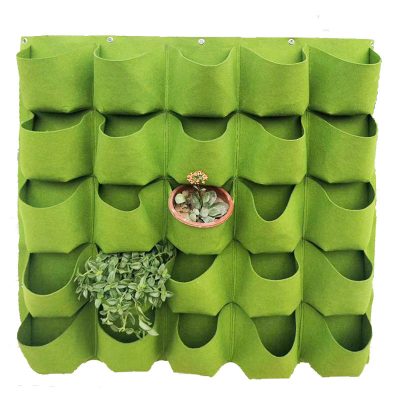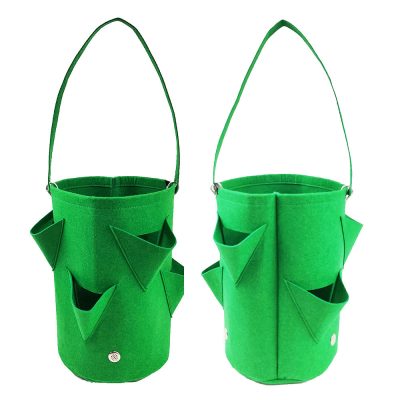When planting in hanging grow bags, consider the following tips and techniques for successful plant growth:
- Choose Appropriate Plants: Select plants that are suitable for growing in hanging conditions. Look for trailing or cascading varieties, compact or dwarf varieties, or plants with shallow root systems. Herbs, strawberries, trailing flowers, and some vegetables are excellent choices.
- Select the Right Size and Depth: Consider the space requirements and root depth of your chosen plants. Ensure the hanging grow bags are large enough to accommodate the root system comfortably. Plants with deeper roots may require deeper grow bags.
- Use Quality Potting Mix: Fill the hanging grow bags with a high-quality potting mix specifically formulated for container gardening. Avoid using garden soil, as it may be too heavy and may not provide adequate drainage.
- Ensure Proper Drainage: Ensure that the hanging grow bags have sufficient drainage holes at the bottom. Adequate drainage is crucial to prevent waterlogging and root rot. If necessary, add additional drainage holes to improve water drainage.
- Planting Technique: Place a layer of potting mix in the bottom of the grow bag and position the plant’s root ball at the appropriate depth. Fill in the remaining space with potting mix, gently firming it around the plant. Leave some space at the top to allow for watering.
- Watering: Water the newly planted hanging grow bags thoroughly, ensuring that water reaches all parts of the potting mix. Check the moisture level regularly and water as needed. Hanging grow bags may dry out more quickly, so monitor the moisture level closely.
- Fertilization: Use a balanced, water-soluble fertilizer suitable for container gardening. Follow the instructions on the fertilizer packaging for the appropriate application rate and frequency. Fertilize regularly to provide essential nutrients for healthy plant growth.
- Sunlight Requirements: Place the hanging grow bags in a location that receives the appropriate amount of sunlight for your plants’ specific needs. Most plants require at least six hours of direct sunlight each day. Adjust the hanging height or location if needed to optimize sunlight exposure.
- Regular Maintenance: Monitor the plants in the hanging grow bags regularly. Check for signs of pests, diseases, or nutrient deficiencies. Prune or trim the plants as necessary to maintain their shape and promote healthy growth. Remove any dead or yellowing leaves promptly.
- Support for Vining Plants: If you’re growing vining plants in hanging grow bags, provide appropriate support structures such as trellises or stakes. Train the vines along the support as they grow to prevent them from becoming tangled and to promote upward growth.
- Rotate and Refresh: Consider rotating the hanging grow bags periodically to ensure balanced sunlight exposure for all sides of the plants. This helps promote even growth and prevents plants from leaning excessively toward the light source. Additionally, refresh the potting mix or replace it entirely every growing season to maintain soil fertility.
By following these tips and techniques, you can create a successful planting experience in hanging grow bags, maximizing your space and enjoying healthy and thriving plants.








